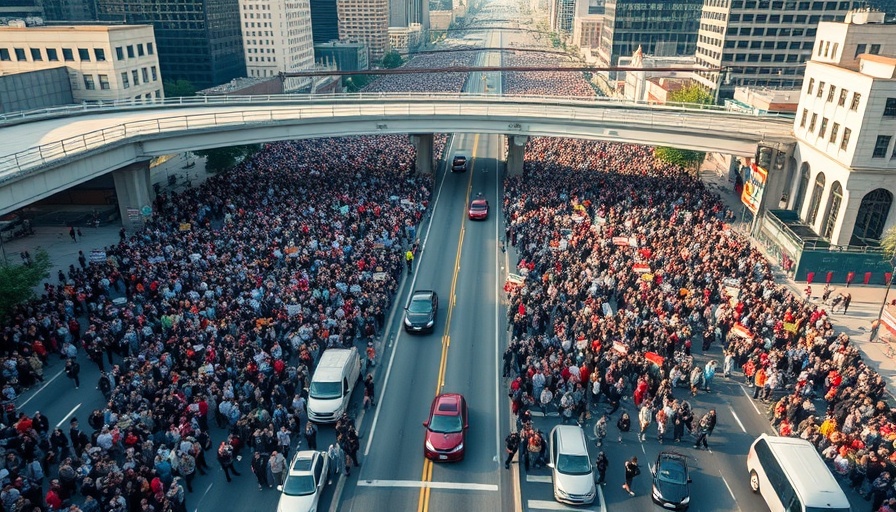
Los Angeles on Edge: National Guard Deployment Amid Protests
In a remarkable display of unrest, Los Angeles found itself engulfed in chaos over immigration policies, prompting President Trump's controversial decision to deploy 2,000 National Guard troops. The announcement arrived amid an escalating wave of protests that have swept through the city—protests characterized not only by fervent demonstrations but also by intermittent violence that raised alarms across communities.
The Context Behind the Protests
The protests erupted in response to heightened immigration enforcement operations in the Los Angeles area, echoing the sentiments of many residents concerned about the implications of such actions. Onlookers saw clashes between demonstrators and law enforcement unfold throughout various neighborhoods, particularly near the Metropolitan Detention Center where frustrations boiled over into violent confrontations.
A Shift in National Guard Presence
According to officials from the California National Guard, the troops were deployed not merely as a response to local unrest but as a strategic maneuver dictated by the federal government. President Trump expressed a firm stance against "Radical Left protests, by instigators and often paid troublemakers," suggesting a narrative that paints protesters as threats to public order.
Governor's Response: A Cry for Restraint
California Governor Gavin Newsom took a strong stance against the deployment, condemning it as an unnecessary escalation that would only further inflame the already tense situation. His remarks on social media questioned the need for military involvement, arguing that local law enforcement should determine resource allocation without federal interference.
Physical Clashes and Community Reactions
As the National Guard took to the streets, visual reports depicted scenes filled with tear gas and non-lethal weaponry deployed against protesters, fueling further outrage. Videos circulated showing demonstrators blocking the 101 Freeway, a bold act of defiance that symbolized the growing impatience with policies perceived to be unjust.
Current Events and Implications for the Future
The situation in Los Angeles serves as a mirror for broader national challenges surrounding immigration policy and civil dissent. With protests popping up across numerous U.S. cities, a key question emerges: how will these events shape both local governance and national policy moving forward? Many fear an intensified crackdown on protests could lead to a cycle of violence and repression, prompting more protests and unrest.
Seeking Common Ground: Voices from Within
Amid the turmoil, community leaders advocate for dialogue rather than confrontation. They emphasize the necessity of understanding the underlying factors driving these protests, focusing on the human stories behind the headlines. From the perspectives of local residents impacted by immigration policies to the law enforcement officials tasked with maintaining order, multiple viewpoints must be acknowledged to foster a productive path toward resolution.
The Broader National Dialogue
This unrest has quickly captured national attention, expected to spark discussions among lawmakers regarding the intersection of military deployment and civil rights. The urgency of the moment creates an opportunity for critical conversations about the role of federal and state authorities in addressing community concerns and public safety.
In conclusion, as Los Angeles navigates this tumultuous period, the essential narrative surrounding immigration and civil rights is evolving. A focus on empathy, engagement, and constructive dialogue may ultimately yield more significant societal change than confrontation alone.
For those who wish to stay updated on these transformative events in Los Angeles, the situation remains fluid with ongoing developments to monitor closely.
 Add Element
Add Element  Add Row
Add Row 



Write A Comment